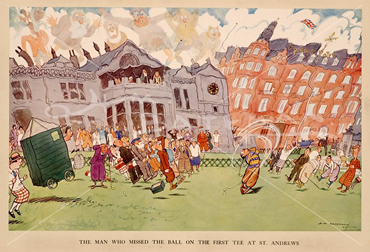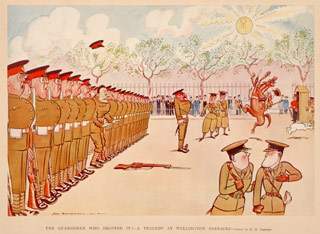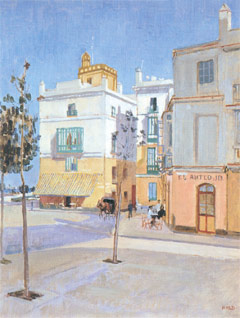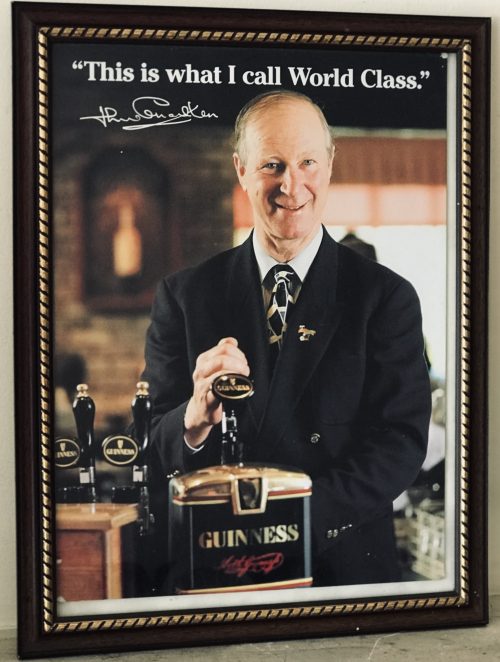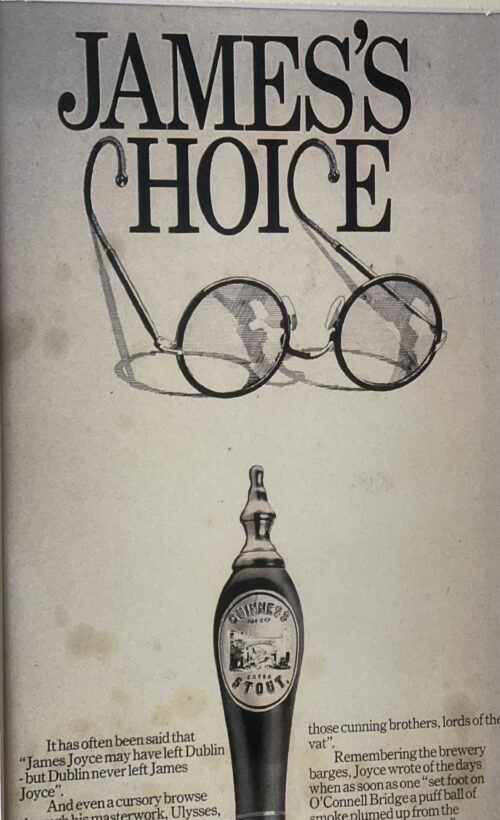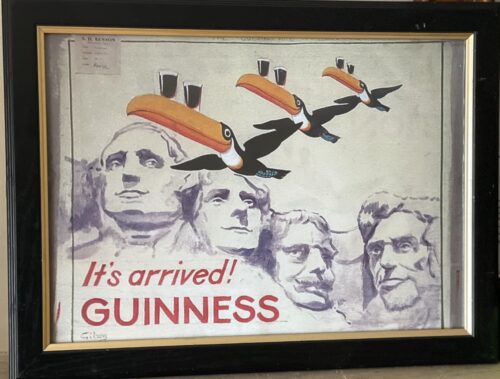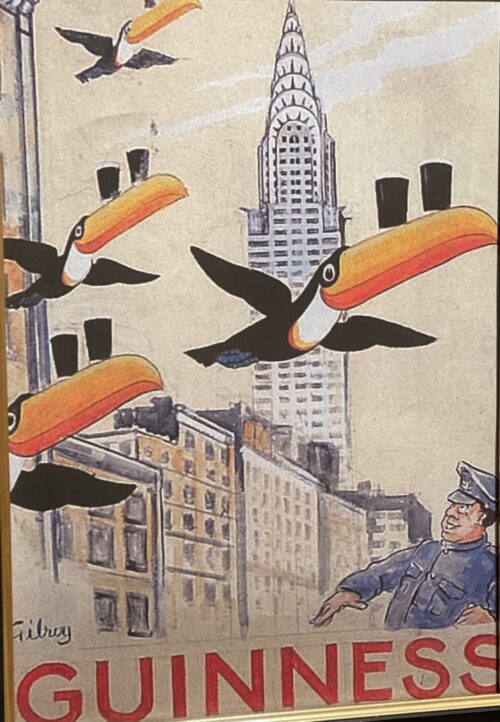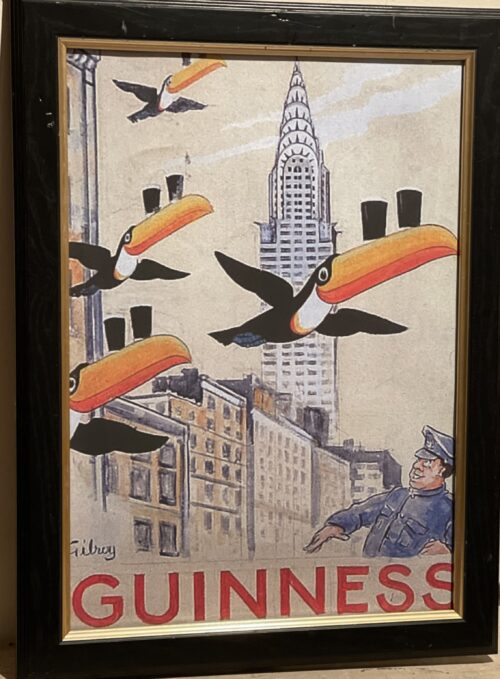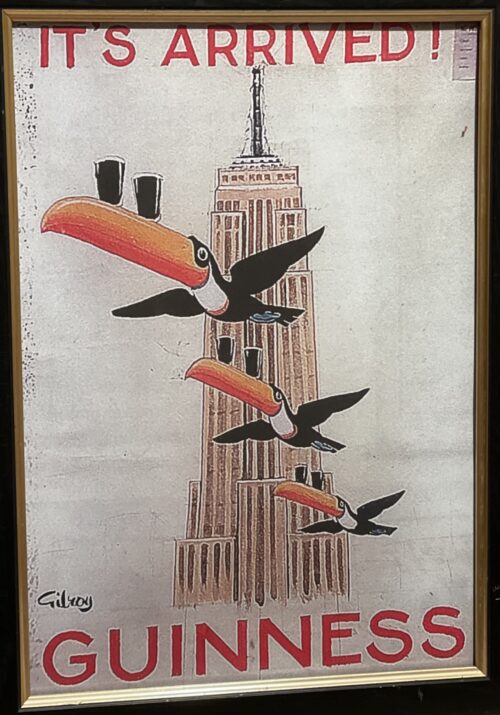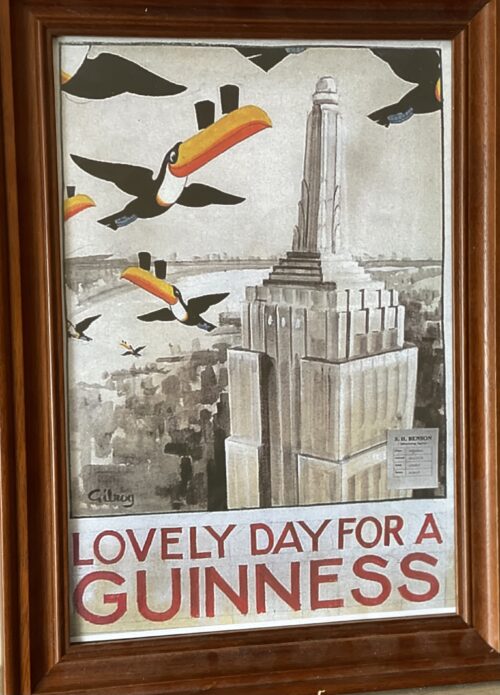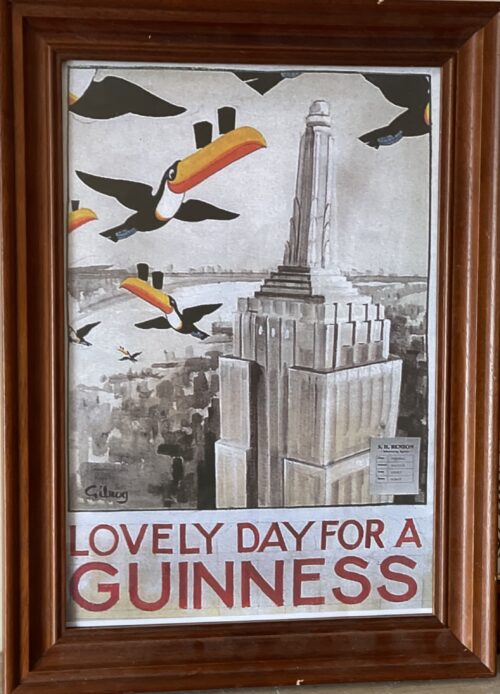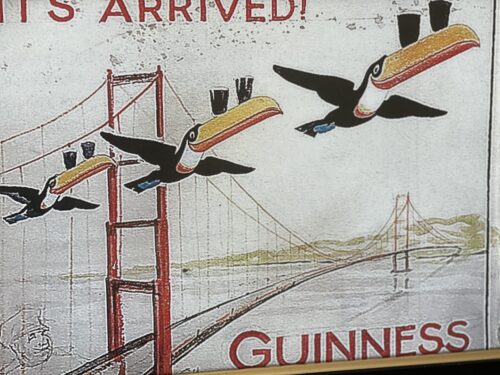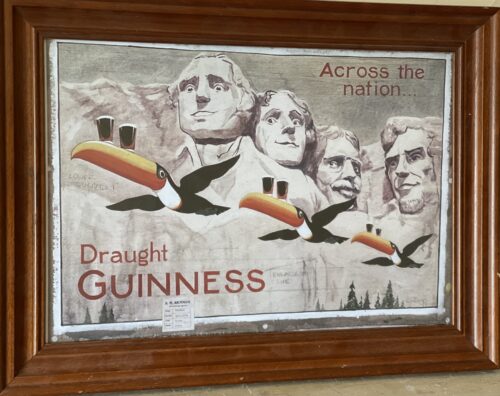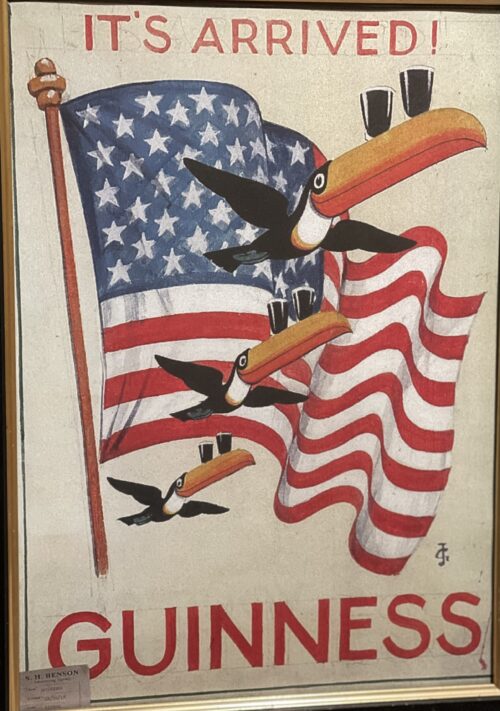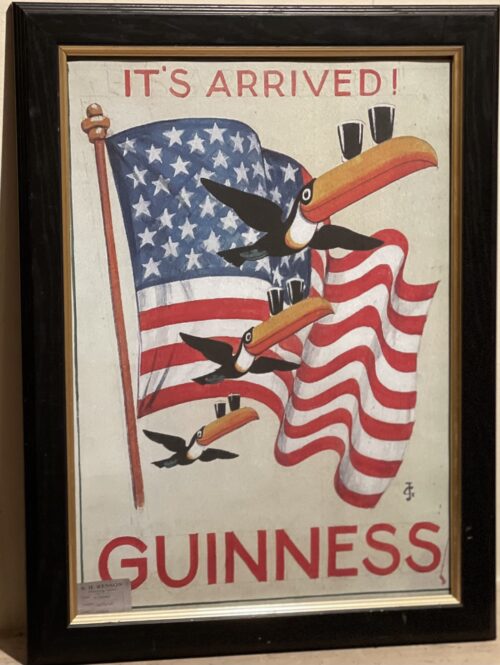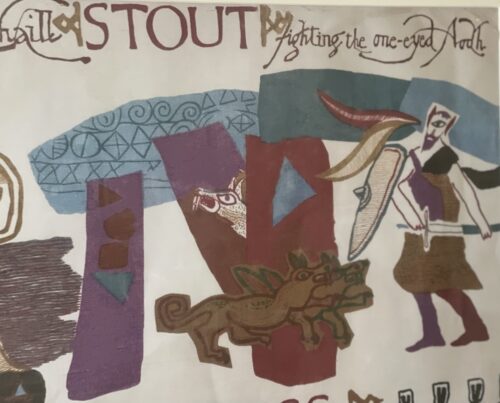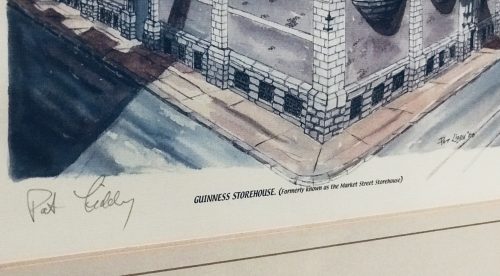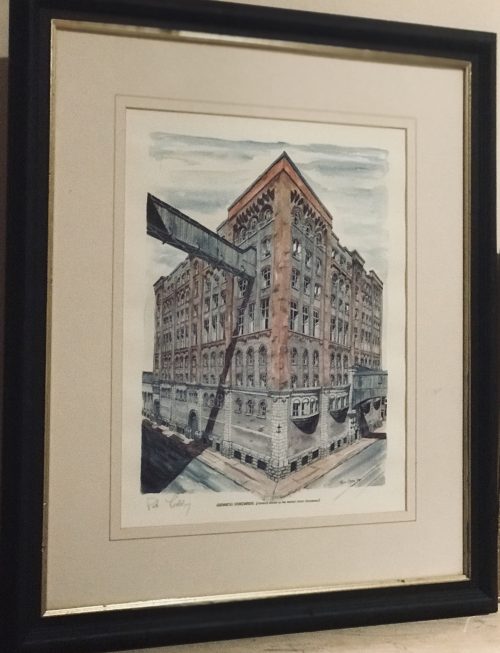Original Resin Guinness Toucan (manufactured by Shannon)
Dimensions :20cm x 10cm x 8cm 0.5kg
For nearly two centuries of existence, the Guinness brewery had almost no need to formally advertise, allowing word-of-mouth to sell the beer, and sell it did. By the late 19th century, Guinness was one of the top three breweries between Britain and Ireland. In 1862, the company adopted an Irish harp as their logo and trademarked it in 1875. However, by the late 1920s, sales were declining, and in 1929, Rupert Guinness, then chair of the company, ran the first-ever Guinness print ad with the slogan “Guinness is good for you.” The very next year, the brewery hired advertising firm S.H. Benson. It was then, in 1930, that the story of the Guinness toucan began.
The man responsible for the iconic bird and his animal companions is the English illustrator and draftsman John Gilroy. He was born in 1898 in Newcastle upon Tyne into a family of eight children, and his father, William, was a landscape painter. From a young age, Gilroy began copying the drawings in magazines, and it was quickly evident he would follow in his father’s professional footsteps.
By 15, he was a cartoonist for the local newspaper. He won a scholarship to art school, and although World War I interrupted his studies, he entered London’s Royal College of Art in 1919. While he was still a student, he received his first commission for commercial art—a promotional pamphlet for the Hydraulic Engineering Co. Not long after graduating, Gilroy began working for S.H. Benson, where he would eventually work on Guiness.

John Gilroy, illustrator of some of Guinness’s most well-known advertisements. (Northeast History Tour)
His first work with the firm was on campaigns for Skipper Sardines and Virol (a brand of malt extract). In his early years at Benson, he and his colleagues created clever characters to make their designs memorable: Baron de Beef, Signor Spaghetti, Miss Di Gester. All these playful characters likely primed Gilroy for the fun and whimsical designs he would eventually draw for Guinness in his 35 years working with the company.
In the early 1930s S.H. Benson boasted an impressive staff of creatives beyond John Gilroy; the late Dorothy Sayers, now famous as a crime writer and poet, wrote copy for the agency. When Guinness approached the firm, they had an interesting request: the final advertising campaign should not be too much to do with beer, despite the fact that it was advertising—well—beer. They thought it would be vulgar. Instead, they preferred something that appealed to families and that highlighted the purported health benefits of the brew.
They asked Gilroy to draft an ad showing a family drinking Guinness, but no one could seem to agree on what the family should look like, nor how they should be presented. Luckily, it was precisely family that led Gilroy to the particular idea that eventually spawned Guinness’s most famous ad campaigns. The artist had recently taken his son to the circus, recounts Guinness archive manager Fergus Brady, and had watched a sea lion balancing a ball on its nose. He realized how fun it would be to draw a sea lion balancing a pint of Guinness on its nose, and pitched the idea to Guinness. From there the series expanded to an entire menagerie. Gilroy drew ostriches, bears, pelicans, kangaroos, and of course, the toucan.
Paired with Sayers’s inventive copy, the ads took off. In her most clever ad, she plays on the toucan / two-can homophone and on the idea that drinking Guinness offers a range of health benefits: “If he can say as you can / Guinness is good for you / How grand to be a Toucan — / Just think what Toucan do.” The illustration features a smiling toucan perched next to two shining pint glasses full of Guinness stout.

With John Gilroy’s illustrations and Dorothy Sayers’s copy, the Guinness toucan ads were an immediate hit. (Guinness)
Gilroy even created toucan ads specifically for the American market with the birds flying over landmarks like the Statue of Liberty, Mount Rushmore, and the Golden Gate Bridge—always carrying two pints on their beaks. Sadly, Guinness never approved and ran the ads.
Over the years, Gilroy created nearly 100 advertisements and 50 poster designs for Guinness. Though he left S.H. Benson as an in-house artist in the 1940s, he continued to freelance for them and continued to create the beloved Guinness zoo ads, crafting new scenarios for his Guinness-loving animals and their beleaguered zookeeper.
Other
vintage Guinness ads from the time feature simpler jingles and catchphrases. “My goodness—my Guinness” often features an animal stealing a man’s pint in comical fashions—an ostrich swallows it, a kangaroo hides the bottle in its pouch, a crocodile holds the pint between his massive jaws, and so on. In another, a smirking tortoise carries a pint on its back under the text, “Have a Guinness when you’re tired.” A man pulls a cart while his horse relaxes and goes for a ride—“Guinness for strength.” There is a playfulness to all of them. Even the ad in which
a man is being chased by a lion feels funny—of course, the lion is chasing the man not to eat him, but to steal his beer. The lion is smiling, his tongue lolling out of his mouth as he runs, and we’re in on the joke: he’ll get the Guinness in the end, and the man is panicking not to save his skin, but to save his beer.

Guinness coasters featuring the menagerie of John Gilroy’s advertisements. (Guinness)
The ads ran primarily in the U.K. and in the 1930s and 1940s were immensely popular—likely the cheerful, cheeky animals and bright colors provided a small antidote to the horrors going on in Europe at the time. In 1939, all troops in the British Expeditionary Force in France received a bottle of Guinness with their Christmas dinner.
The company remained committed to adding a touch of whimsy to their generally solid and forward-thinking business practices. To celebrate Guinness’s bicentennial in 1959, the company dropped 150,000 embossed bottles containing Guinness-related information and paraphernalia into the Atlantic Ocean. It is the same year, as well, that Guinness employed scientists to create the Guinness Draft we know today by pairing nitrogen gas and carbon dioxide—it is that combination that gives the beer its prized silky texture. In in 1963 and 1965, Guinness opened breweries in Nigeria and Malaysia, respectively, cementing the company’s global reach and impact.
As the company modernized, so too did their advertising strategies. In 1982, the Guinness brewery switched ad firms and stopped running the zoo-themed ads—the toucan and its friends were no longer considered effective advertising techniques. However, nostalgia for the Guinness toucan remained, and the company has released limited-edition cans and merchandise featuring the original Gilroy drawings. In 2017, the 200th anniversary of Guinness in America, they released a number of decorative itemsimprinted with the image of the two-pint-touting toucans flying over Mount Rushmore. The image of Gilroy’s toucan still immediately brings Guinness to mind, and it remains an immensely memorable mascot of the world’s premier dark beer.
Arthur Guinness started brewing ales in 1759 at the St James Gate Brewery,Dublin.On 31st December 1759 he signed a 9,000 year lease at £45 per annum for the unused brewery.Ten years later, on 19 May 1769, Guinness first exported his ale: he shipped six-and-a-half barrels to Great Britain before he started selling the dark beer
porter in 1778.
The first Guinness beers to use the term were Single Stout and Double Stout in the 1840s.
Throughout the bulk of its history, Guinness produced only three variations of a single beer type: porter or single stout, double or extra and foreign stout for export.
“Stout” originally referred to a beer’s strength, but eventually shifted meaning toward body and colour.
Porter was also referred to as “plain”, as mentioned in the famous refrain of
Flann O’Brien‘s poem “The Workman’s Friend”: “A pint of plain is your only man.”
Already one of the top-three British and Irish brewers, Guinness’s sales soared from 350,000
barrels in 1868 to 779,000 barrels in 1876.
In October 1886 Guinness became a public company, and was averaging sales of 1,138,000 barrels a year. This was despite the brewery’s refusal to either advertise or offer its beer at a discount.
Even though Guinness owned no
public houses, the company was valued at £6 million and shares were twenty times oversubscribed, with share prices rising to a 60 per cent premium on the first day of trading.
The breweries pioneered several quality control efforts. The brewery hired the statistician
William Sealy Gosset in 1899, who achieved lasting fame under the pseudonym “Student” for techniques developed for Guinness, particularly
Student’s t-distribution and the even more commonly known
Student’s t-test.
By 1900 the brewery was operating unparalleled welfare schemes for its 5,000 employees.
By 1907 the welfare schemes were costing the brewery £40,000 a year, which was one-fifth of the total wages bill.
The improvements were suggested and supervised by Sir
John Lumsden. By 1914, Guinness was producing 2,652,000 barrels of beer a year, which was more than double that of its nearest competitor
Bass, and was supplying more than 10 per cent of the total UK beer market.
In the 1930s, Guinness became the seventh largest company in the world.
Before 1939, if a Guinness brewer wished to marry a
Catholic, his resignation was requested. According to Thomas Molloy, writing in the
Irish Independent, “It had no qualms about selling drink to Catholics but it did everything it could to avoid employing them until the 1960s.”
Guinness thought they brewed their last porter in 1973.
In the 1970s, following declining sales, the decision was taken to make Guinness Extra Stout more “drinkable”. The gravity was subsequently reduced, and the brand was relaunched in 1981.
Pale malt was used for the first time, and isomerized hop extract began to be used.
In 2014, two new porters were introduced: West Indies Porter and Dublin Porter.
Guinness acquired the
Distillers Company in 1986.
This led to a
scandal and criminal trialconcerning the artificial inflation of the Guinness share price during the takeover bid engineered by the chairman, Ernest Saunders. A subsequent £5.2 million success fee paid to an American lawyer and Guinness director, Tom Ward, was the subject of the case
Guinness plc v Saunders, in which the House of Lords declared that the payment had been invalid.
In the 1980s, as the IRA’s bombing campaign spread to London and the rest of Britain, Guinness considered scrapping the Harp as its logo.
The company merged with
Grand Metropolitan in 1997 to form
Diageo.
Due to controversy over the merger, the company was maintained as a separate entity within Diageo and has retained the rights to the product and all associated trademarks of Guinness.

The Guinness Brewery Park Royal during demolition, at its peak the largest and most productive brewery in the world.
The Guinness brewery in
Park Royal, London closed in 2005. The production of all Guinness sold in the UK and Ireland was moved to
St. James’s Gate Brewery, Dublin.
Guinness has also been referred to as “that black stuff”.
Guinness had a fleet of ships, barges and yachts.
The Irish
Sunday Independent newspaper reported on 17 June 2007 that Diageo intended to close the historic St James’s Gate plant in Dublin and move to a greenfield site on the outskirts of the city.
This news caused some controversy when it was announced.The following day, the
Irish Daily Mail ran a follow-up story with a double page spread complete with images and a history of the plant since 1759. Initially, Diageo said that talk of a move was pure speculation but in the face of mounting speculation in the wake of the
Sunday Independent article, the company confirmed that it is undertaking a “significant review of its operations”. This review was largely due to the efforts of the company’s ongoing drive to reduce the environmental impact of brewing at the St James’s Gate plant.
On 23 November 2007, an article appeared in the
Evening Herald, a Dublin newspaper, stating that the Dublin City Council, in the best interests of the city of Dublin, had put forward a motion to prevent planning permission ever being granted for development of the site, thus making it very difficult for Diageo to sell off the site for residential development.
On 9 May 2008, Diageo announced that the St James’s Gate brewery will remain open and undergo renovations, but that breweries in Kilkenny and Dundalk will be closed by 2013 when a new larger brewery is opened near Dublin. The result will be a loss of roughly 250 jobs across the entire Diageo/Guinness workforce in Ireland.
Two days later, the
Sunday Independent again reported that Diageo chiefs had met with
Tánaiste Mary Coughlan, the deputy leader of the Government of Ireland, about moving operations to Ireland from the UK to benefit from its lower corporation tax rates. Several UK firms have made the move in order to pay Ireland’s 12.5 per cent rate rather than the UK’s 28 per cent rate.
Diageo released a statement to the London stock exchange denying the report.
Despite the merger that created Diageo plc in 1997, Guinness has retained its right to the Guinness brand and associated trademarks and thus continues to trade under the traditional Guinness name despite trading under the corporation name Diageo for a brief period in 1997.
In November 2015 it was announced that Guinness are planning to make their beer suitable for consumption by vegetarians and vegans by the end of 2016 through the introduction of a new filtration process at their existing
Guinness Brewery that avoids the need to use
isinglass from fish bladders to filter out yeast particles.
This went into effect in 2017, per the company’s FAQ webpage where they state: “Our new filtration process has removed the use of isinglass as a means of filtration and vegans can now enjoy a pint of Guinness. All Guinness Draught in keg format is brewed without using isinglass. Full distribution of bottle and can formats will be in place by the end of 2017, so until then, our advice to vegans is to consume the product from the keg format only for now.
Guinness
stout is made from water,
barley, roast malt extract,
hops, and
brewer’s yeast. A portion of the barley is roasted to give Guinness its dark colour and characteristic taste. It is
pasteurisedand
filtered.
Until the late 1950s Guinness was still
racked into wooden casks. In the late 1950s and early 1960s, Guinness ceased brewing cask-conditioned beers and developed a keg brewing system with aluminium kegs replacing the wooden casks; these were nicknamed “iron lungs”.
Until 2016 the production of Guinness, as with many beers, involved the use of
isinglass made from fish. Isinglass was used as a fining agent for settling out suspended matter in the vat. The isinglass was retained in the floor of the vat but it was possible that minute quantities might be carried over into the beer.
Diageo announced in February 2018 that the use of isinglass in draught Guinness was to be discontinued and an alternative clarification agent would be used instead. This has made draught Guinness acceptable to vegans and vegetarians.
Arguably its biggest change to date, in 1959 Guinness began using nitrogen, which changed the fundamental texture and flavour of the Guinness of the past as nitrogen bubbles are much smaller than CO
2, giving a “creamier” and “smoother” consistency over a sharper and traditional CO
2 taste. This step was taken after
Michael Ash – a mathematician turned brewer – discovered the mechanism to make this possible.
Nitrogen is less soluble than carbon dioxide, which allows the beer to be put under high pressure without making it fizzy. High pressure of the dissolved gas is required to enable very small bubbles to be formed by forcing the draught beer through fine holes in a plate in the tap, which causes the characteristic “surge” (the
widget in cans and bottles achieves the same effect). This “widget” is a small plastic ball containing the nitrogen. The perceived smoothness of draught Guinness is due to its low level of carbon dioxide and the creaminess of the head caused by the very fine bubbles that arise from the use of nitrogen and the dispensing method described above. “Foreign Extra Stout” contains more carbon dioxide, causing a more acidic taste.
Contemporary Guinness Draught and Extra Stout are weaker than they were in the 19th century, when they had an
original gravity of over 1.070. Foreign Extra Stout and Special Export Stout, with abv of 7.5% and 9% respectively, are perhaps closest to the original in character.
Although Guinness may appear to be black, it is officially a very dark shade of
ruby.
The most recent change in alcohol content from the Import Stout to the Extra Stout was due to a change in distribution through North American market. Consumer complaints have influenced recent distribution and bottle changes.
Studies claim that Guinness can be
beneficial to the heart. Researchers found that “‘
antioxidantcompounds’ in the Guinness, similar to those found in certain fruits and vegetables, are responsible for the health benefits because they slow down the deposit of harmful
cholesterol on the artery walls.”
Guinness ran an advertising campaign in the 1920s which stemmed from market research – when people told the company that they felt good after their pint, the slogan, created by
Dorothy L. Sayers–”Guinness is Good for You”. Advertising for alcoholic drinks that implies improved physical performance or enhanced personal qualities is now prohibited in Ireland.
Diageo, the company that now manufactures Guinness, says: “We never make any medical claims for our drinks.”
Origins : Dublin
Dimensions : 43cm x 35cm








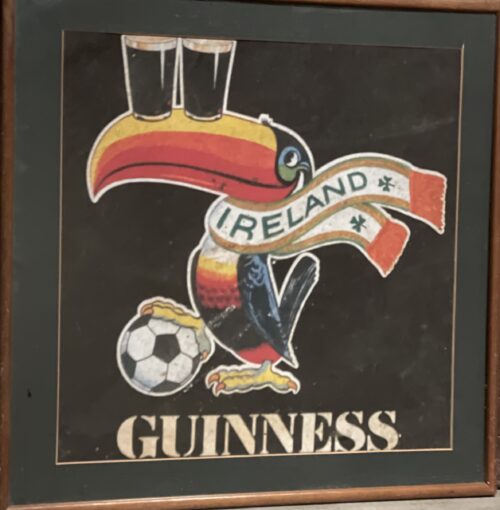

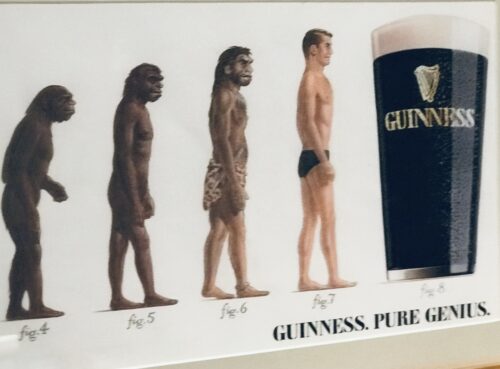
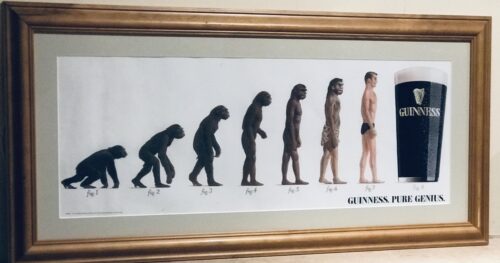
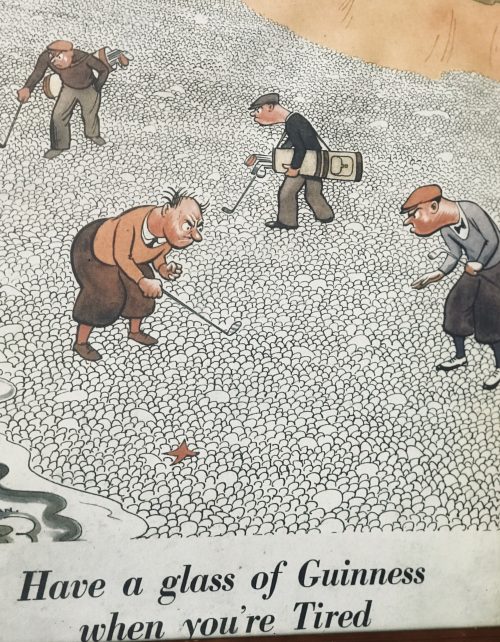

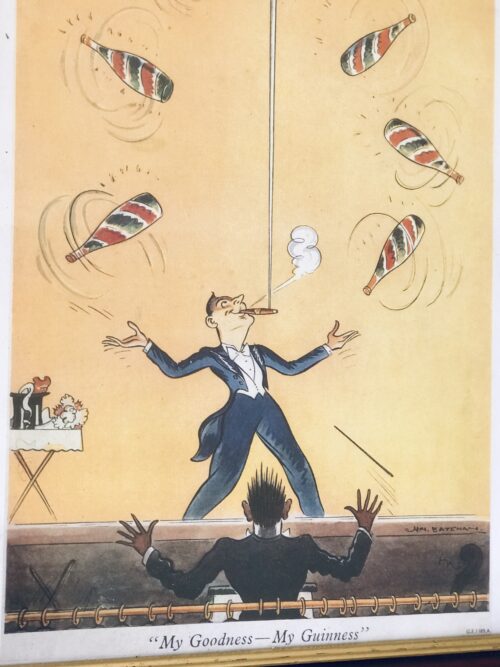
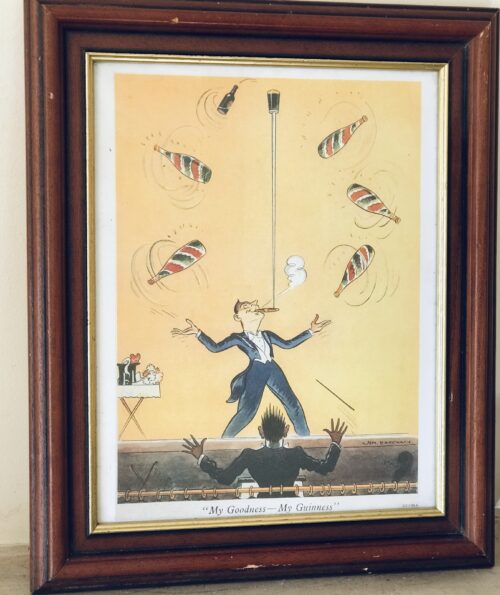
 H M Bateman 1887 - 1970
20th century cartoonist and caricaturist
To many admirers of the art of the cartoon, H.M.Bateman is the most original, the most various, the most brilliant – and, indeed, the funniest – genius of his times. Born in 1887, he was already drawing for publication in his early teens. Astonishingly prolific and inventive, everything he saw became material, so that his work can be read as a social history of Britain in the first half of the 20th Century and, to an extraordinary degree, as a kind of autobiography. His family and friends; his trips to the fair, to the seaside, abroad; his passions for the Music Hall, for tap-dancing, for boxing, for fishing, for golf; his desperate experiences in the First World War; his car, his house, his vacuum-cleaner; his triumphs and disasters over many years – all find their way in to his cartoons.
H M Bateman 1887 - 1970
20th century cartoonist and caricaturist
To many admirers of the art of the cartoon, H.M.Bateman is the most original, the most various, the most brilliant – and, indeed, the funniest – genius of his times. Born in 1887, he was already drawing for publication in his early teens. Astonishingly prolific and inventive, everything he saw became material, so that his work can be read as a social history of Britain in the first half of the 20th Century and, to an extraordinary degree, as a kind of autobiography. His family and friends; his trips to the fair, to the seaside, abroad; his passions for the Music Hall, for tap-dancing, for boxing, for fishing, for golf; his desperate experiences in the First World War; his car, his house, his vacuum-cleaner; his triumphs and disasters over many years – all find their way in to his cartoons.
